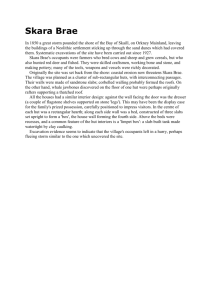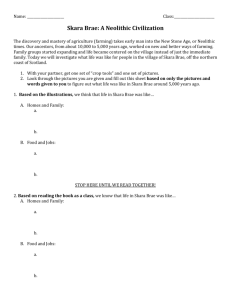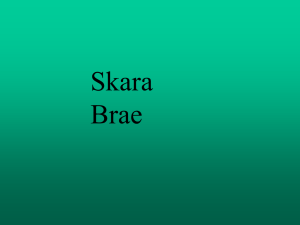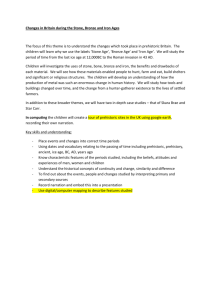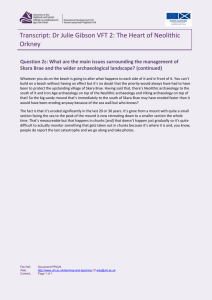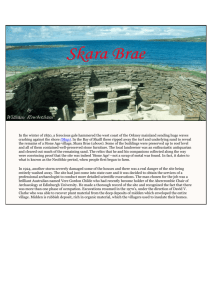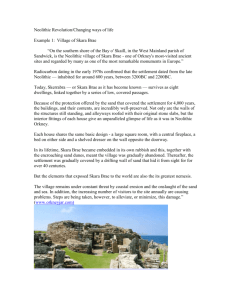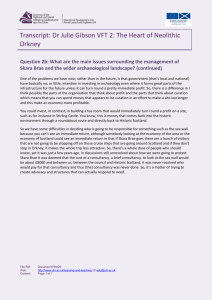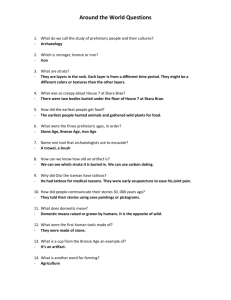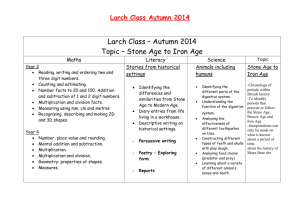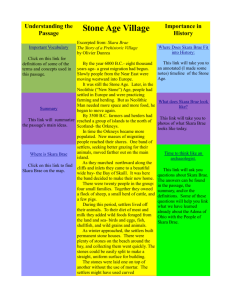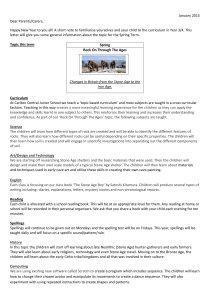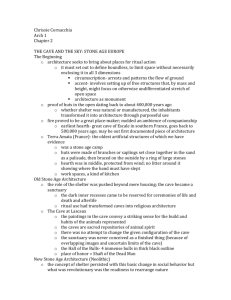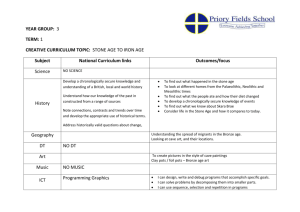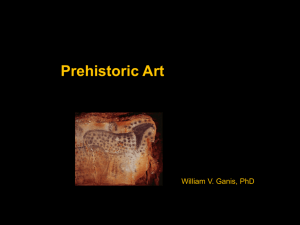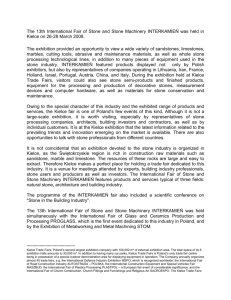ENGLISH: (Continue phonics, reading & spelling programme) Diary
advertisement
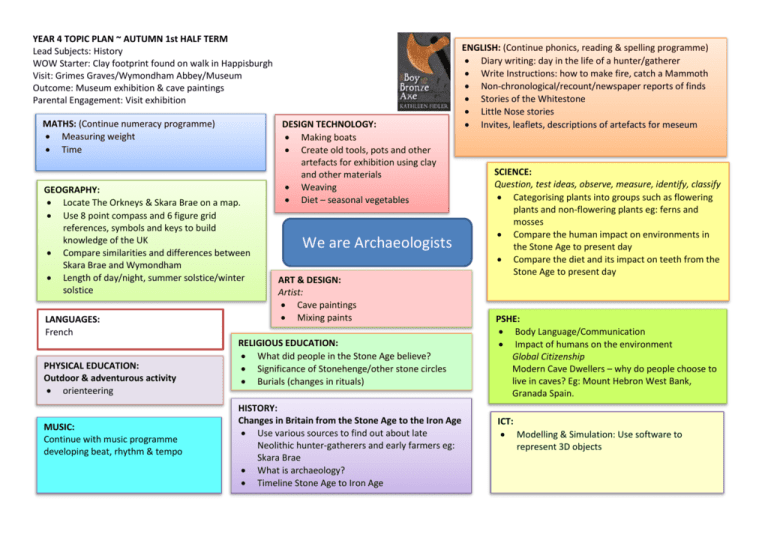
YEAR 4 TOPIC PLAN ~ AUTUMN 1st HALF TERM Lead Subjects: History WOW Starter: Clay footprint found on walk in Happisburgh Visit: Grimes Graves/Wymondham Abbey/Museum Outcome: Museum exhibition & cave paintings Parental Engagement: Visit exhibition MATHS: (Continue numeracy programme) Measuring weight Time GEOGRAPHY: Locate The Orkneys & Skara Brae on a map. Use 8 point compass and 6 figure grid references, symbols and keys to build knowledge of the UK Compare similarities and differences between Skara Brae and Wymondham Length of day/night, summer solstice/winter solstice LANGUAGES: French PHYSICAL EDUCATION: Outdoor & adventurous activity orienteering MUSIC: Continue with music programme developing beat, rhythm & tempo DESIGN TECHNOLOGY: Making boats Create old tools, pots and other artefacts for exhibition using clay and other materials Weaving Diet – seasonal vegetables We are Archaeologists ART & DESIGN: Artist: Cave paintings Mixing paints RELIGIOUS EDUCATION: What did people in the Stone Age believe? Significance of Stonehenge/other stone circles Burials (changes in rituals) HISTORY: Changes in Britain from the Stone Age to the Iron Age Use various sources to find out about late Neolithic hunter-gatherers and early farmers eg: Skara Brae What is archaeology? Timeline Stone Age to Iron Age ENGLISH: (Continue phonics, reading & spelling programme) Diary writing: day in the life of a hunter/gatherer Write Instructions: how to make fire, catch a Mammoth Non-chronological/recount/newspaper reports of finds Stories of the Whitestone Little Nose stories Invites, leaflets, descriptions of artefacts for meseum SCIENCE: Question, test ideas, observe, measure, identify, classify Categorising plants into groups such as flowering plants and non-flowering plants eg: ferns and mosses Compare the human impact on environments in the Stone Age to present day Compare the diet and its impact on teeth from the Stone Age to present day PSHE: Body Language/Communication Impact of humans on the environment Global Citizenship Modern Cave Dwellers – why do people choose to live in caves? Eg: Mount Hebron West Bank, Granada Spain. ICT: Modelling & Simulation: Use software to represent 3D objects
